80 million years ago in the Cretaceous period, Manitoba was covered with a prehistoric sea. In the past few decades, thousands of fossils have been discovered and unearthed; not of dinosaurs like in Alberta, but of gigantic aquatic reptiles and prehistoric fish.
When I tell people that I went on a fossil dig at the Canadian Fossil Discover Centre in Morden, the reaction is often the following:
- You can do fossil digs in Manitoba?!
- I had no idea that the Canadian Fossil Discovery Centre even existed!
Welcome to Manitoba! A province full of unexpected surprises, like a sweet little museum that houses the largest collection of marine reptile fossils in Canada, including Canada’s largest Mosasaur, and then offers the opportunity for the general public to come out and help them on a fossil dig nearby. It doesn’t get cooler than that, especially for those of you who, like myself, grew up wanting to be a palaeontologist but never followed through.
Well, I’m happy to say, I achieved a childhood dream…
…and it all happened right here in Morden, the quaint town of 7,800 in the Pembina Valley, an hour and a half drive south-west of Winnipeg. I guarantee you a lot of people have no idea this exists.
Canadian Fossil Discover Centre
I had almost missed the Canadian Fossil Discovery Centre when I first drove up to it. I expected it to be located in its own facility, but instead it’s almost hidden away in the basement of Morden’s sports complex. Despite its initial appearance, this place could potentially rival Alberta’s Royal Tyrrell Museum one day.
It was here at the Canadian Fossil Discovery Centre where I met up with Chelsey, who introduced me to Manitoba’s prehistoric fossil record, taking me around the museum, introducing me to some of these prehistoric beasts.
Say hello to Plesi, the short necked Plesiosaur. We know by the shape of its teeth that it would have likely been a fish eater.
This is a Mosasaur skull that was found in 1974. Apparently its body would have been approximately 15-20 feet in length!
This is a model of a fleshed-out Mosasaur. Chelsey explained that anything hanging in the museum is a plaster copy, but the fossils laying on the bottom are real specimens. Fossils are otherwise way too heavy to have hanging on display.
This massive fish is a Pachyrhizodus from the late Cretaceous period.
And this guy (or gal)? This is a Plesiosaur, the kind that have the long necks. We know that by looking at their bone structure, their necks weren’t super flexible. While they couldn’t curve their necks into snake-like coils, they could shimmy their necks back and forth or up and down.
Again, check out those teeth!
They also had four paddles for swimming.
In a way, plesiosaurs reminded me of swimming Brontosaurus (now called Apatosaurus), one of my favourite dinosaurs from my childhood.
Here’s a Xiphactinus fish. Kind of looks like a bulldog, doesn’t it?
And here’s the mother of all fossils, the “T.Rex of the Sea”, the largest Mosasaur ever found in Canada: Bruce!
Bruce is incredibly special to the Canadian Fossil Discovery Centre, being the largest Mosasaur ever found in Canada. According to his webpage (yes, he gets his own page!), he was found in 1974 in Thornhill, Manitoba – a 10 minute drive west of Morden.
Bruce belonged to a group of Mosasaurs called the Tylosaurs, which were considered to be fierce predators at the top of the food chain, thriving in that prehistoric sea known as the Western Interior Seaway.
p.s. Bruce was later determined to be a female Mosasaur based on her bone structure, but shhhh… we don’t want to confuse the kids!
Apparently fossils were being discovered in the hills in the 1970s when the Morden area was being mined for bentonite. The mines didn’t care about the fossils, but two locals, Henry Isaak and Don Bell, dropped by to investigate, and knew something had to be done to save the fossils.
According to Chelsey, the mining company agreed to allow people to excavate the fossils as long as they didn’t interrupt the mining process.
Grants for summer students were applied for, and for two years, 30 Mosasaurs and 20 Plesiosaurs were excavated, beginning the collection for what would become the Canadian Fossil Discover Centre. You can read the full history on their website.
Behind the Scenes
I was quite fortunate that Chelsey took me behind the scenes so I could get a sense of their collection, as well as their palaeontology labs. She warned me that the daily life of a palaeontologist isn’t as sexy as the movies make it out to be, but we’ll be the judge of that!
But seriously, how cool is it to be in such a facility. Behind every drawer is fossil to some prehistoric creature that once lived in what is now Manitoba.
Remember Xiphactinus? Here’s his (or her) jaw…
This, I believe, is the tusk of a mammoth.
These are fossil excavations covered in plaster jackets waiting to be opened, analyzed, and marked with specimen numbers.
Speaking of analysis and specimen numbers, here’s where it’s done.
This lab reminded me of a workshop you’d find in a university, or heck, even a home garage-turned-laboratory. There was something homey and familiar about it.
Let’s inspect that table a little bit closer, shall we?
Those things in the box are teeth, not claws.
Above, I believe, are ribs, though don’t quote me on that. But notice how they all have a white rectangle with a code? Those items have been tracked with a specimen number. Every item that has a specimen number can be searched for on the Canadian Fossil Discovery Centre’s Fossil Database. You don’t even need a specimen number to do the search. It’s actually quite fun to play around and see exactly what they have in their collection.
The Fossil Dig
Ahh, the fossil dig. This is the opportunity of a lifetime for yours truly. I never in a million years imagined myself ever doing a fossil dig, and yet here I was passenger side with Chelsey driving through the farms of Morden into the Pembina Hills.
But first, you know how everyone says “Manitoba is flat”? Well, guess what… it’s not.
I knew this was the case, but hadn’t fully experienced it until I was in the van with Chelsey, and we started to drive up a hill, the lip of what used to be Lake Agassiz, a glacial meltwater lake from the last ice age 10,000 years ago. Sure, this may be a minor geographical feature, but it was the first taste of what would become many debunked myths.
Shortly after we climbed the hill, we got out of the van, and I immediately began to appreciate Manitoba’s prairie skies. The clouds were unreal…
We walked along a path through a farmer’s field, through some overgrown tall grass prairie full of wildflowers buzzing with bees and crickets. A warm wind was blowing.
We then walked down along the edge of a ditch whose soils were revealing different sediment layers.
We rounded the corner, and then we were there: the site of the current excavation.
It was basically a dusty (though damp from recent rains) open site where dozens of fossils were in plain view, just lying there in the dirt.
We found a place along the excavation to work on, and Chelsey placed down knee pads and gave me a dentist’s scraping tool, and a broad paint brush. The idea is to scrape away at the mud with the dentist’s tool, and then brush away the dirt to see if it reveals any fossils.
Apparently I have a knack for this kind of thing, as I found many tiny prehistoric fish teeth as well as a fish backbone. However, we were looking for more Mosasaur bones. Eventually, we did find this…
I know it doesn’t look like much, but that reddish thing in the centre right? It was a fossilized bone. My task was to figure out where it went. Did it curve downward and continue deeper into the mud? Only using a dentist’s tool, it was much more time consuming than it looked. However, I was a happy camper and could have done this all day.
We spent about an hour onsite under the heat of the high noon sunshine working on the fossils before I had to head off to my next destination on my itinerary. All I know is that I got a taste of life as a palaeontologist, and yes, if I ever need an alternative career path, I think I’ve found my calling.
Thanks to Chelsey and everyone at the Canadian Fossil Discovery Centre for hosting me!
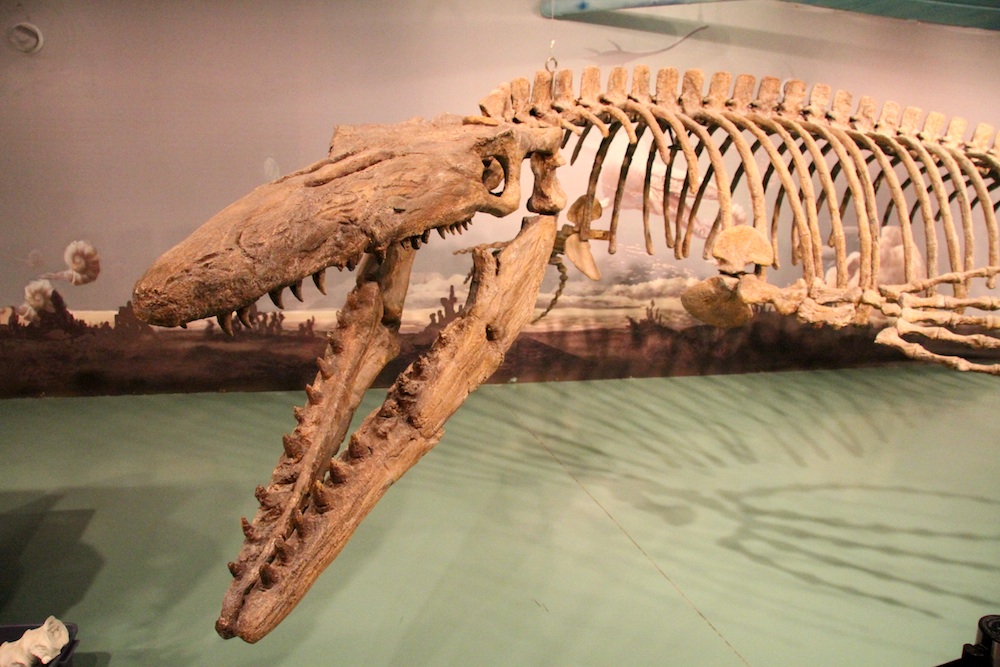
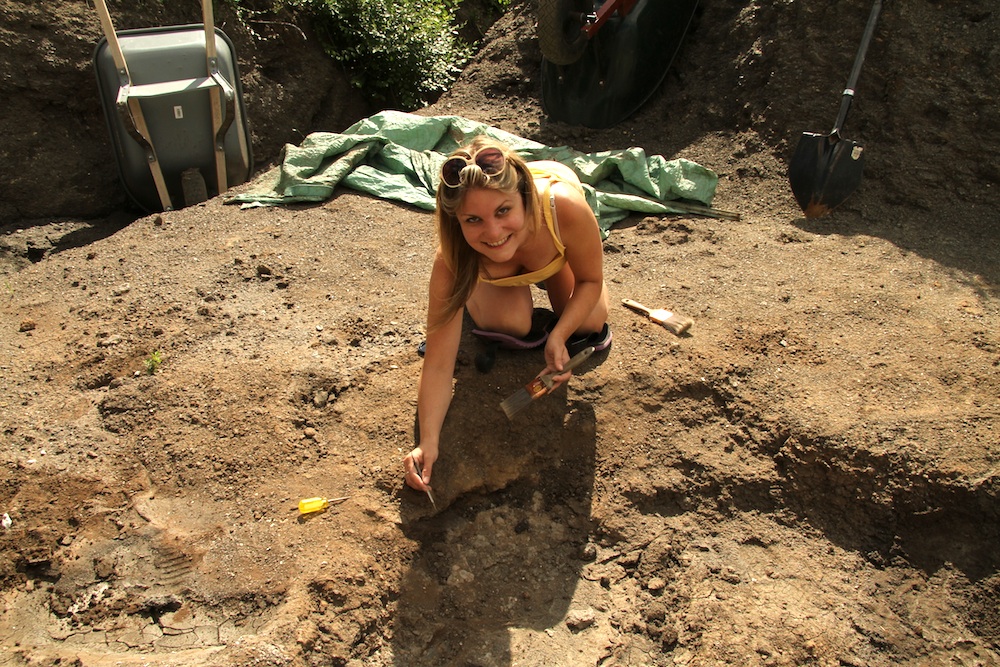
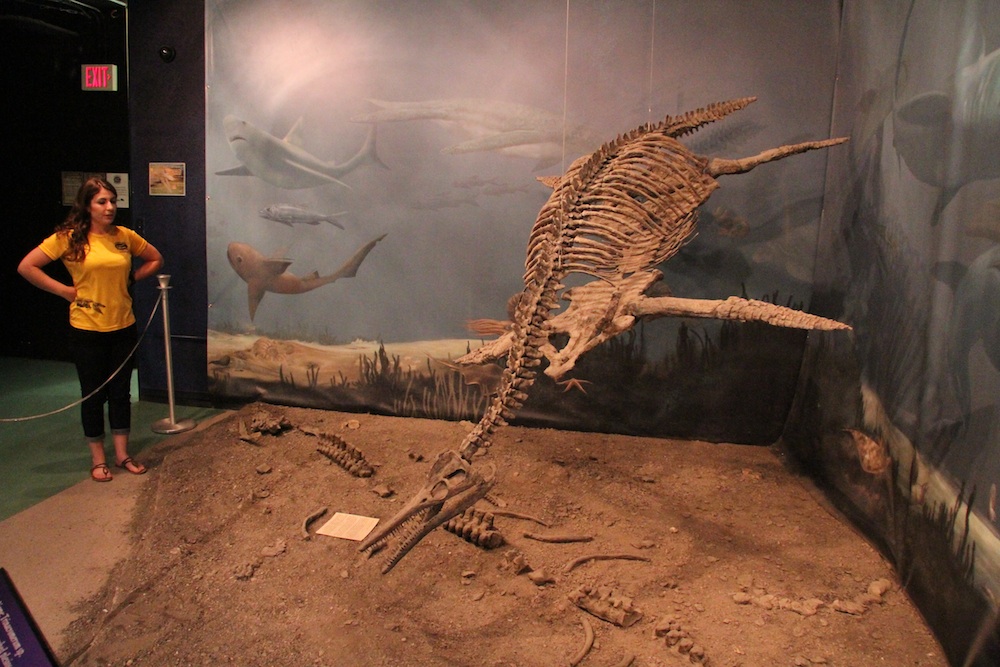
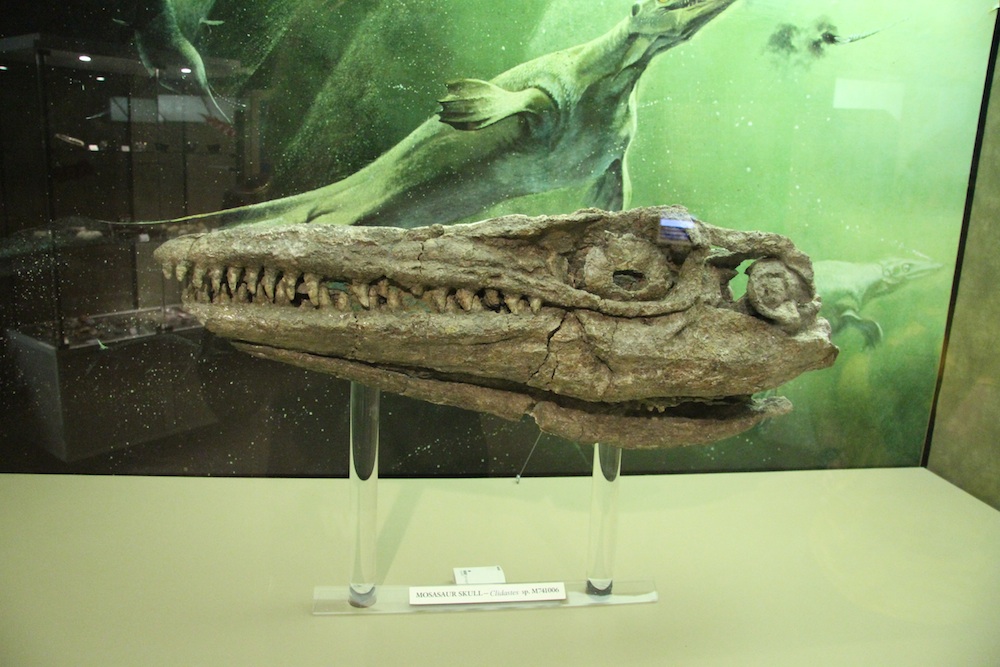
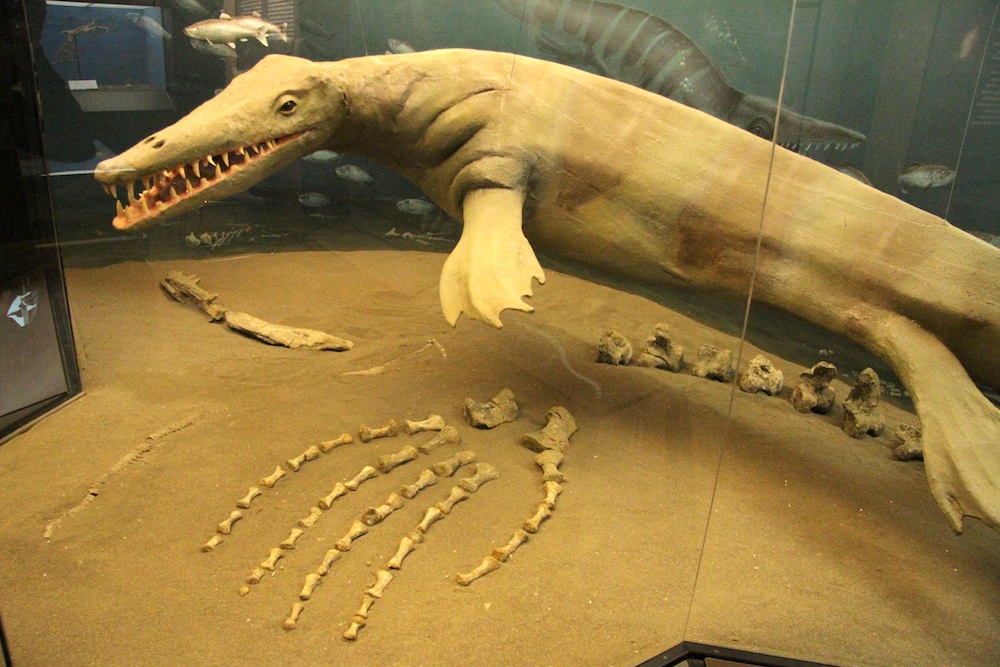
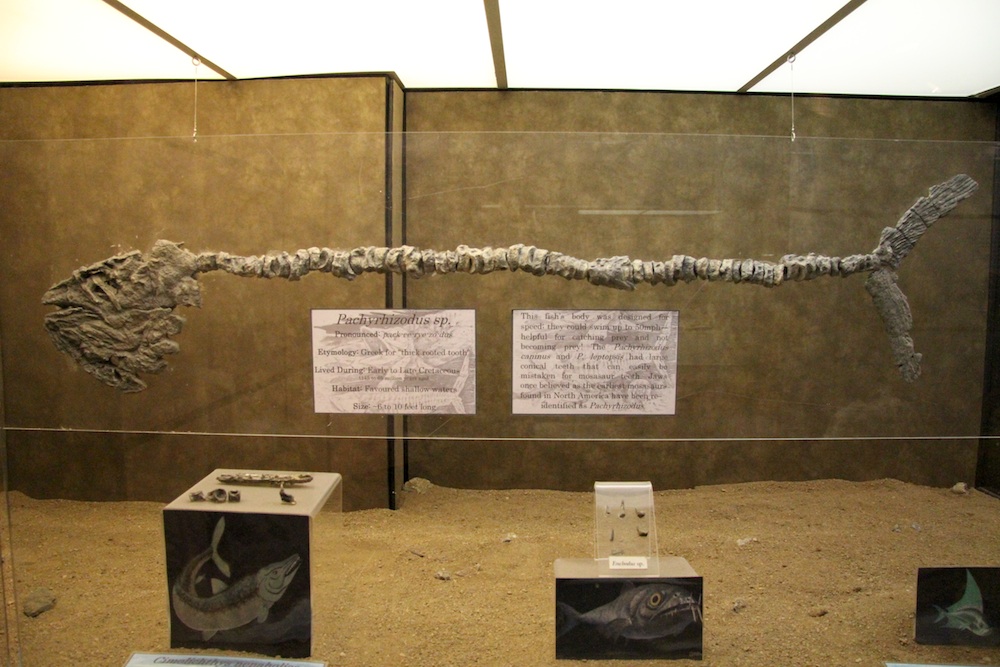
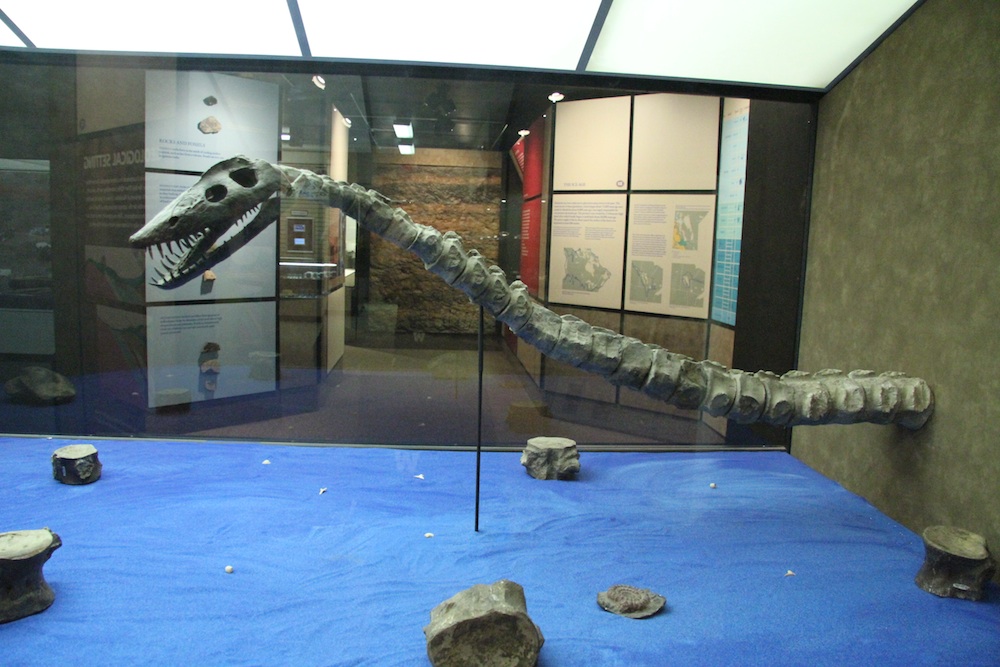
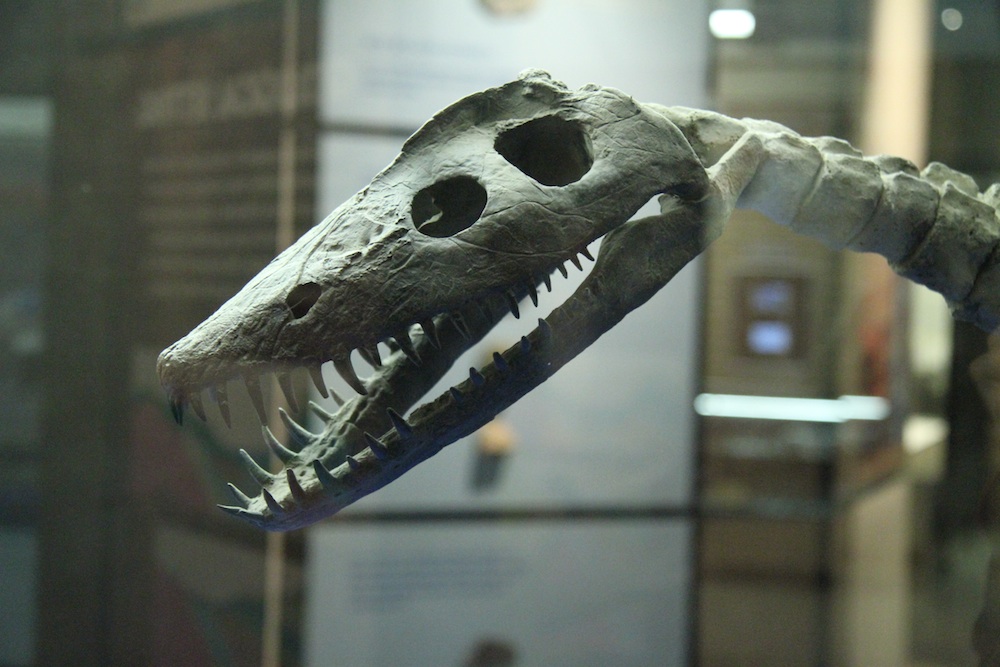
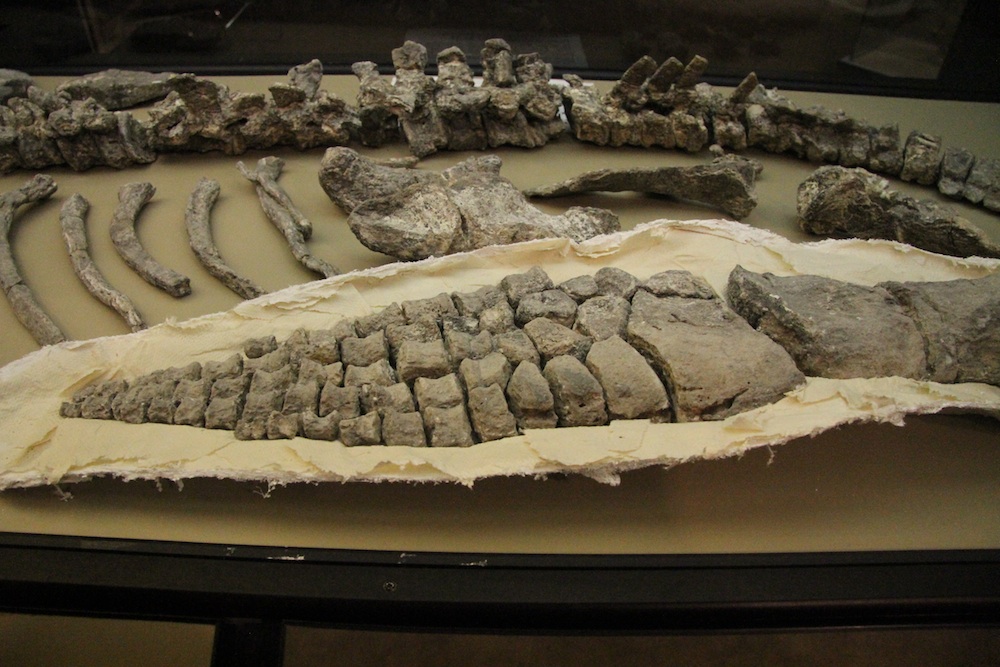
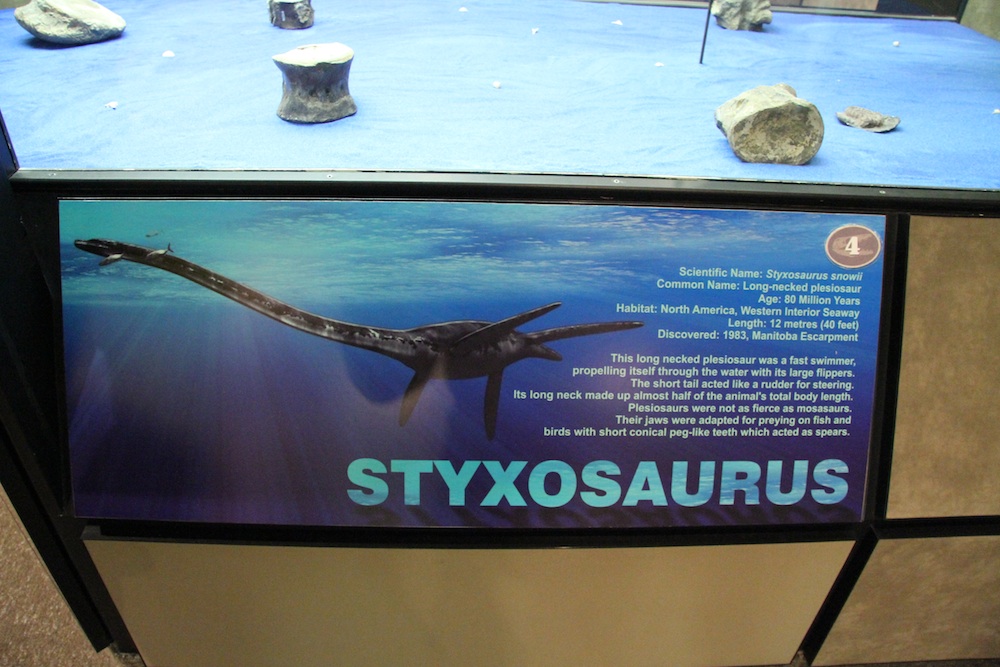
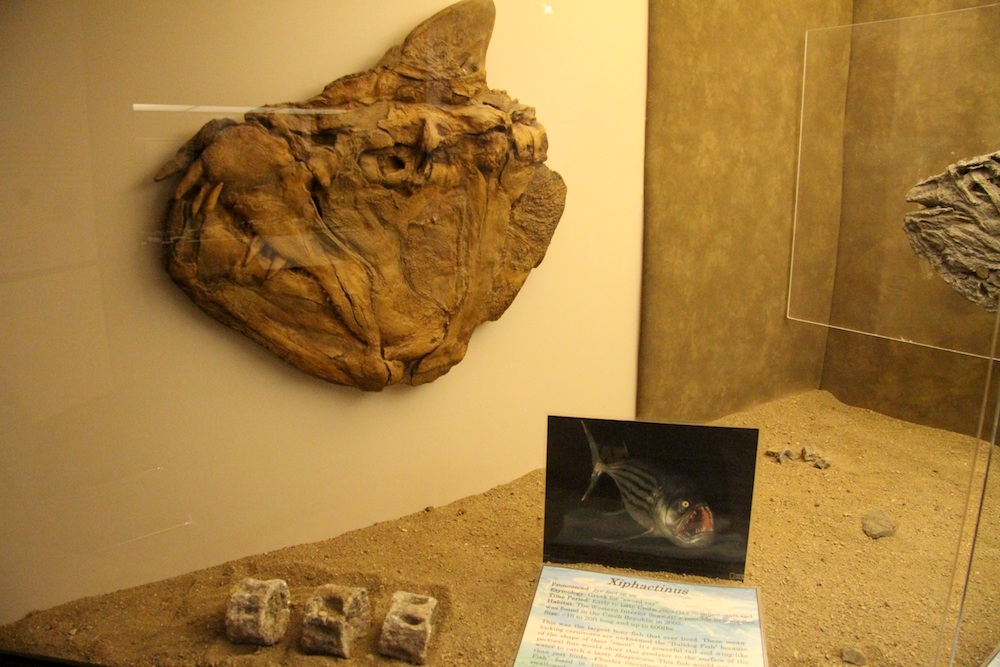
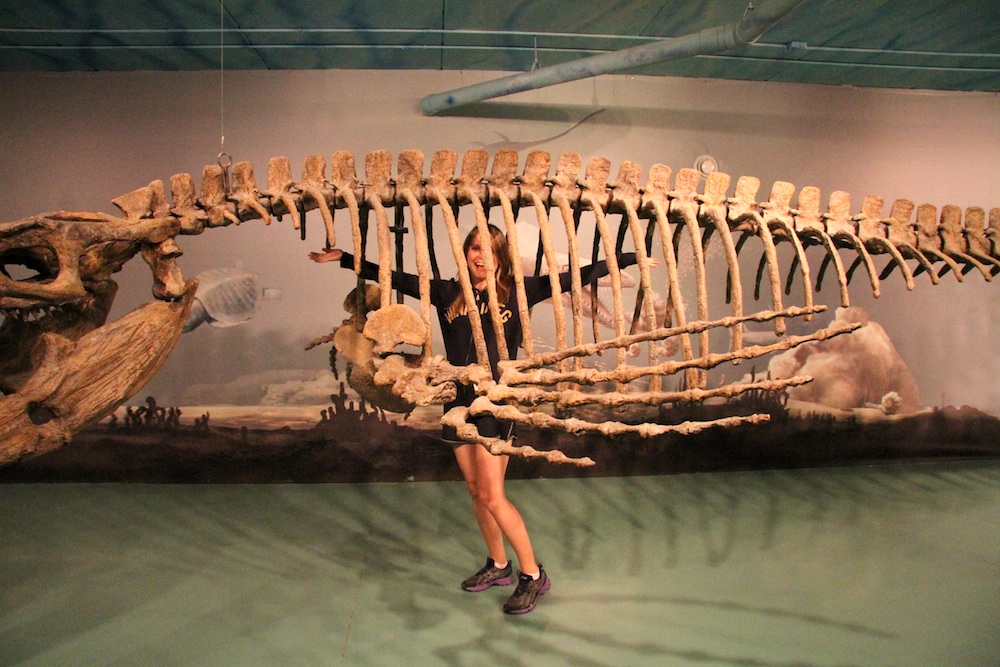
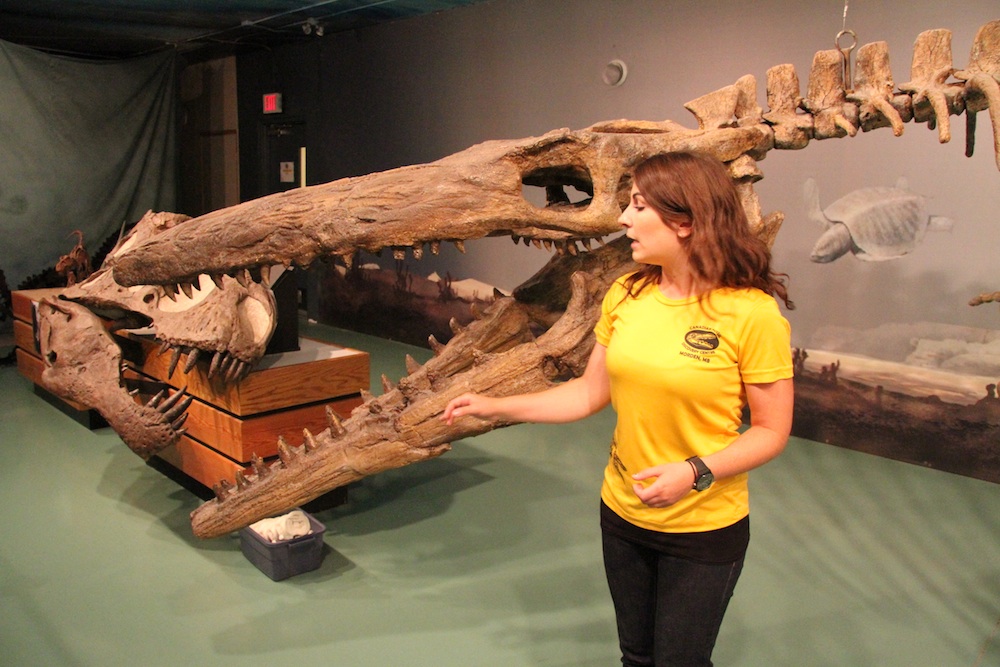
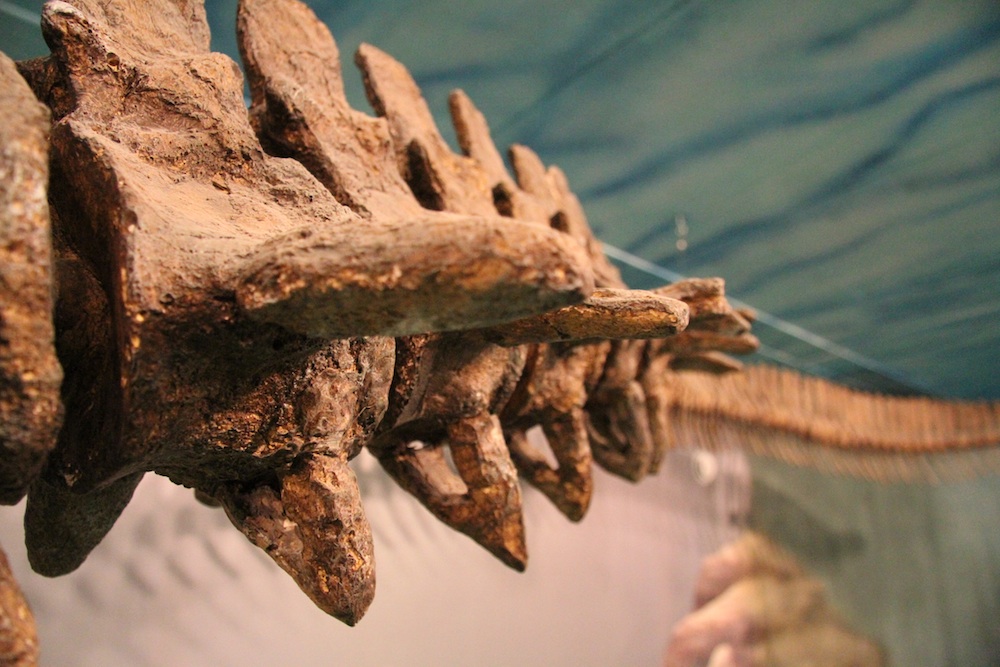
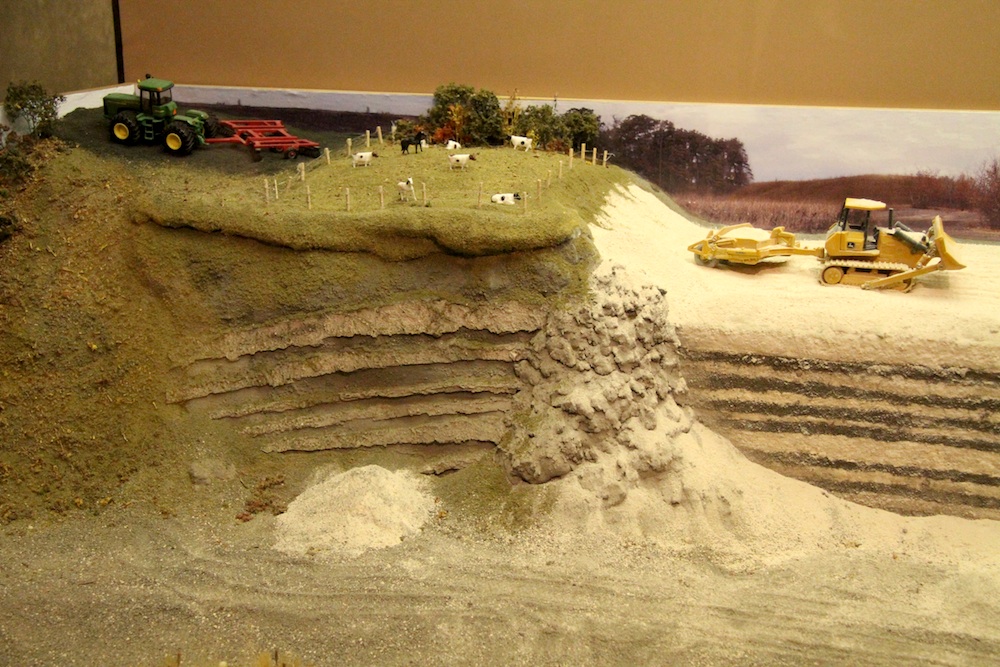
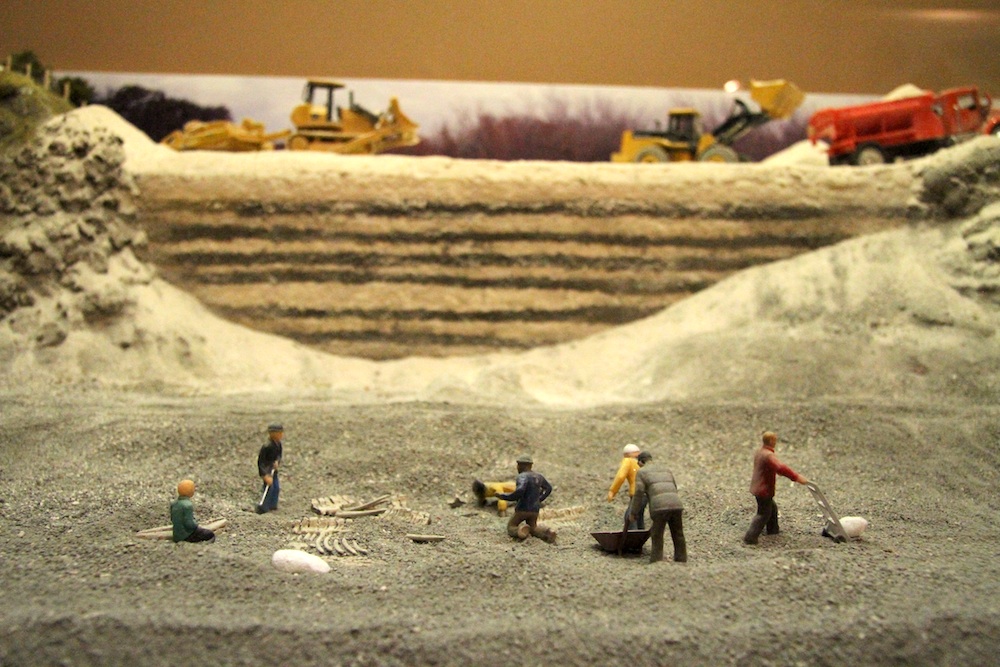
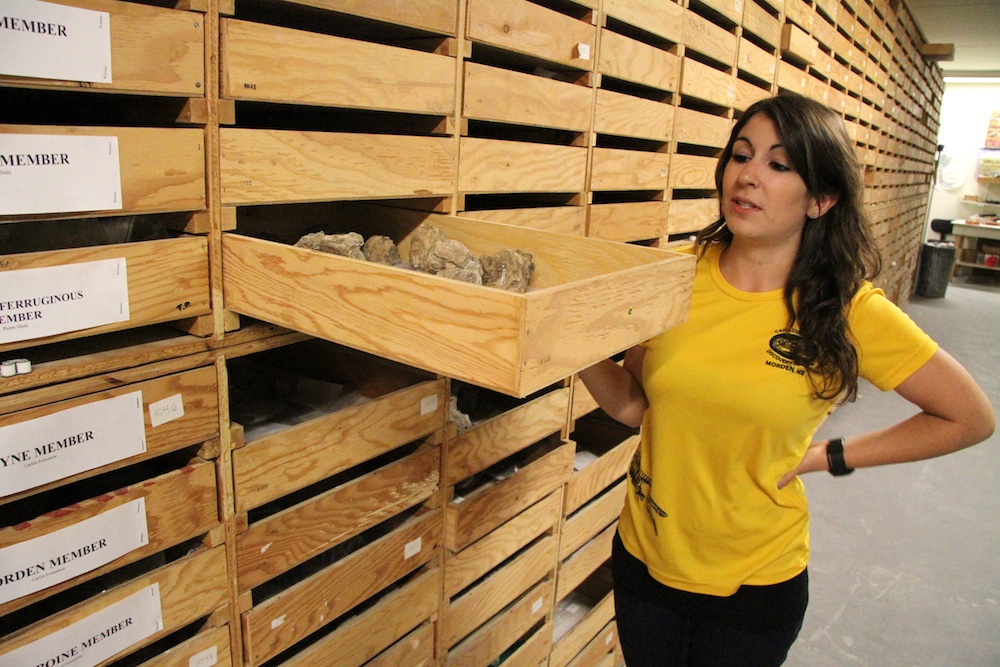
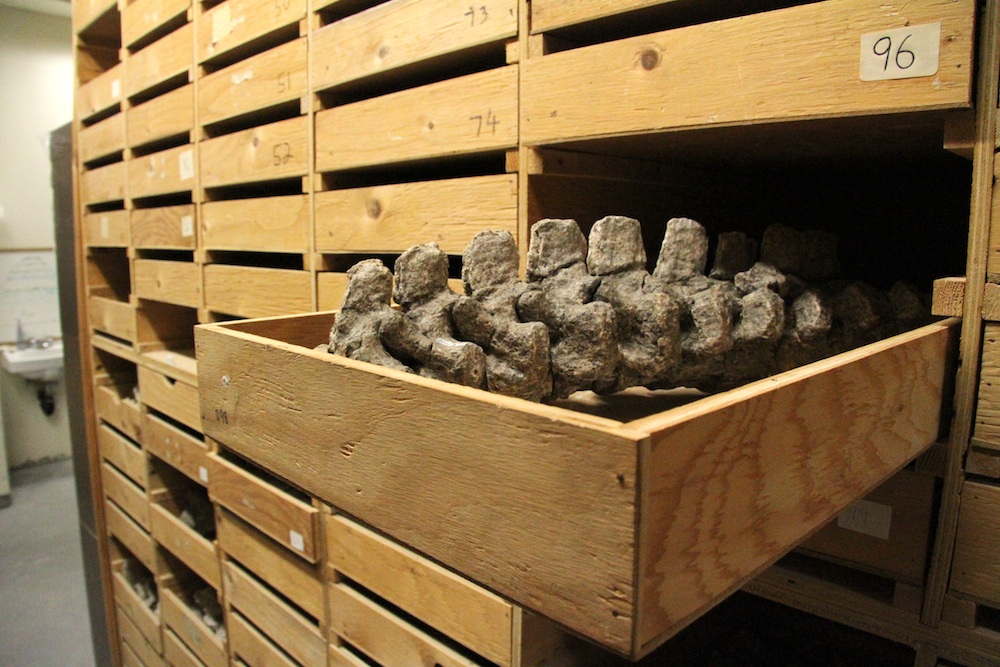
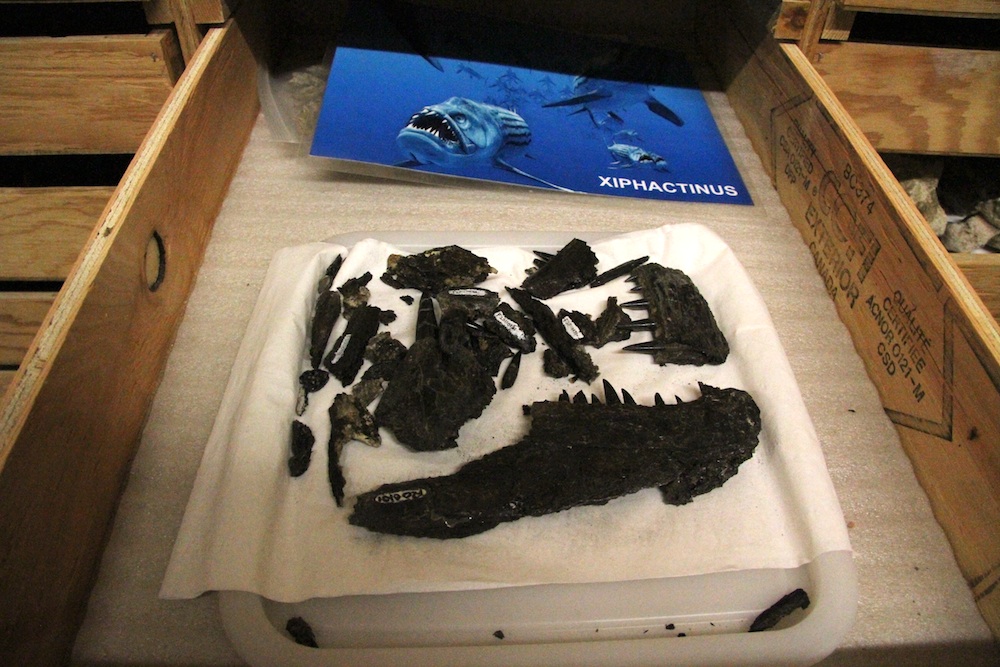
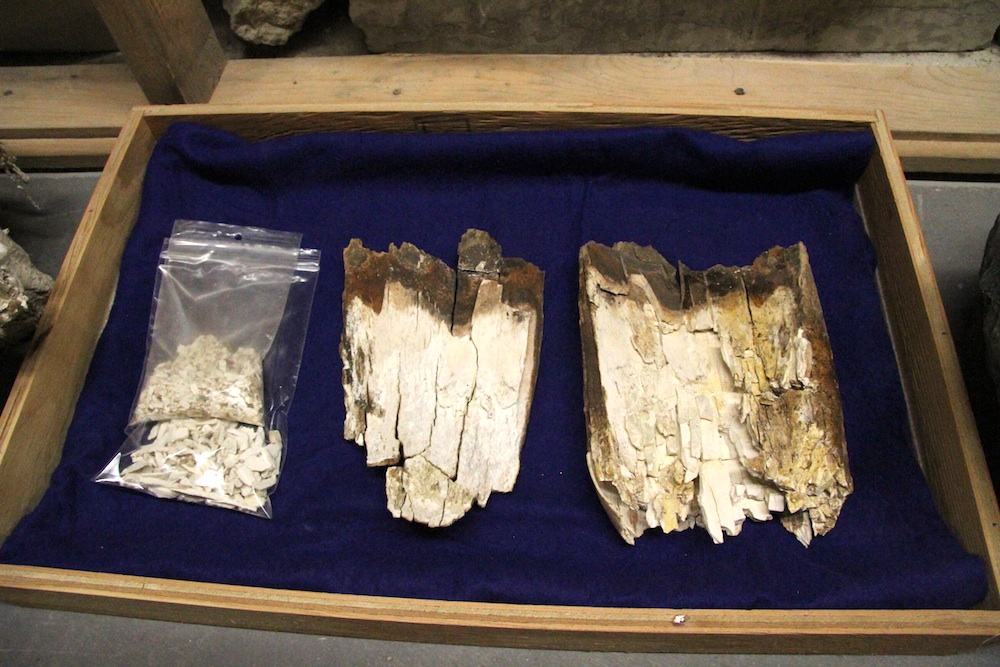
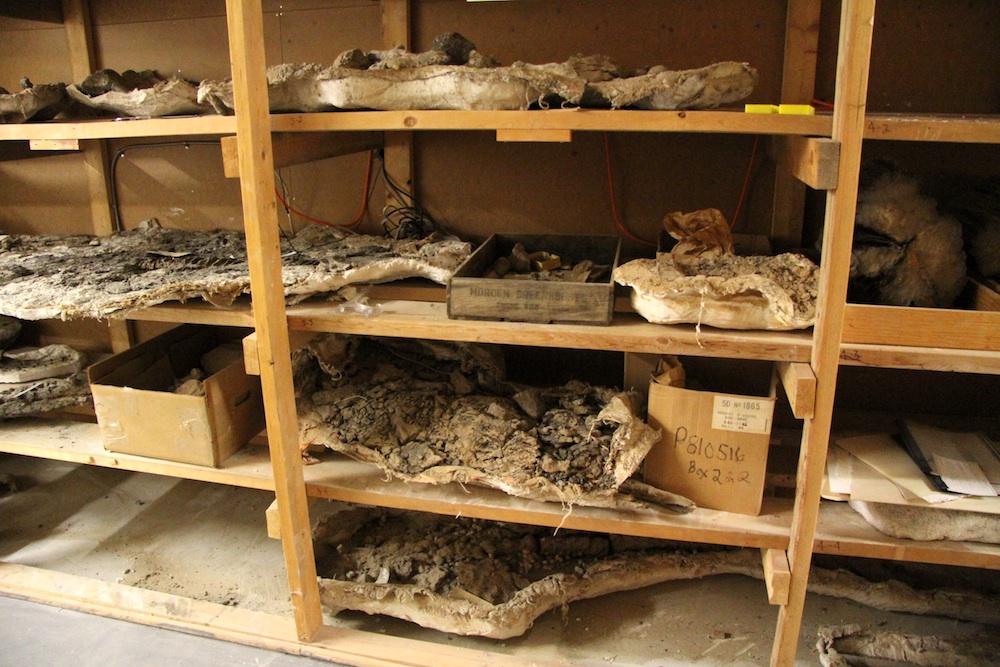
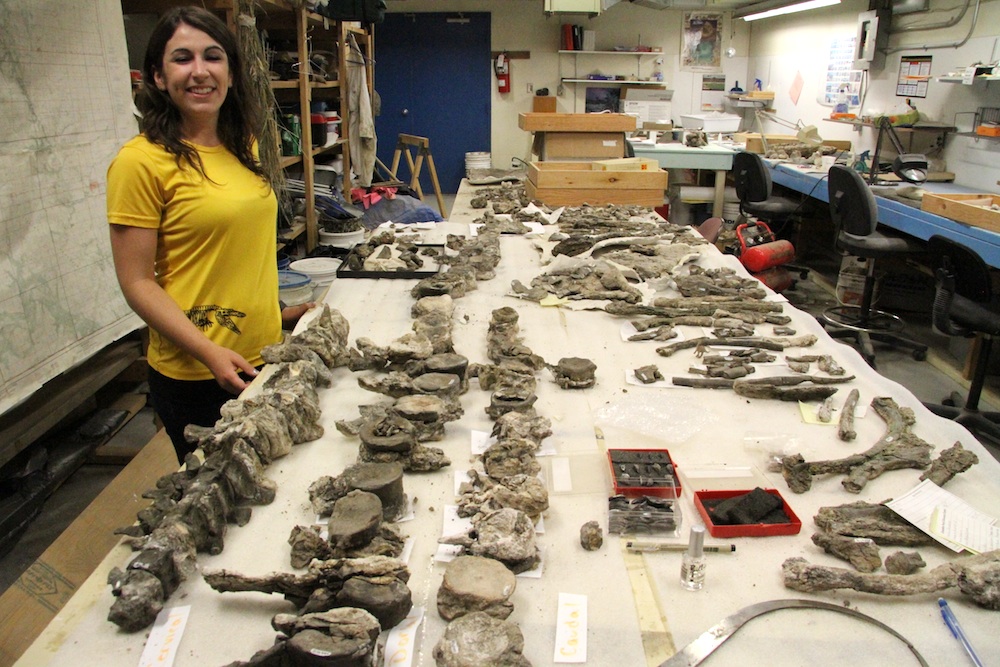
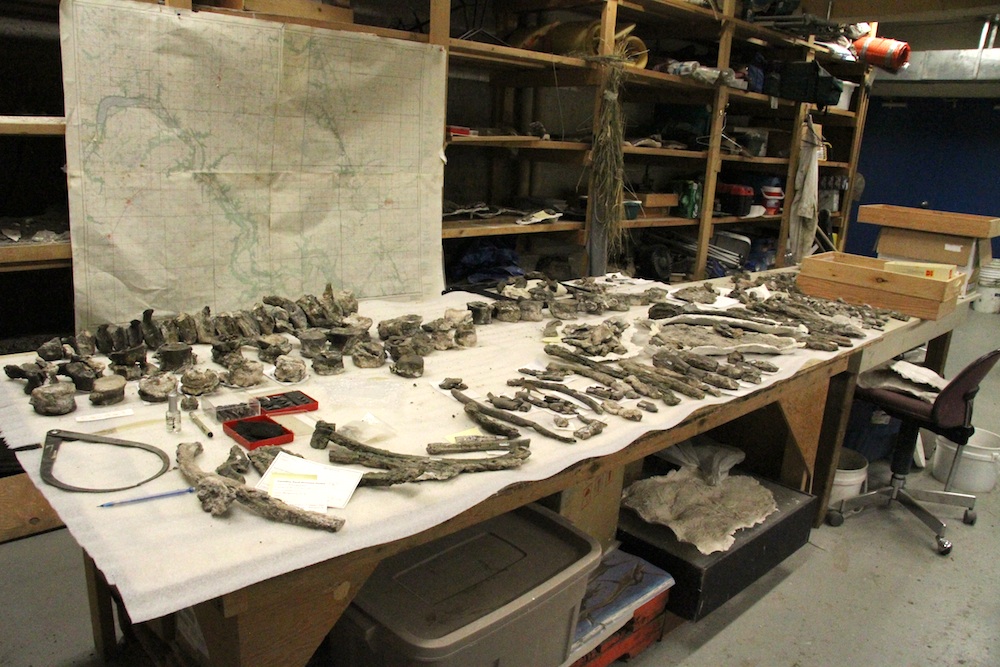
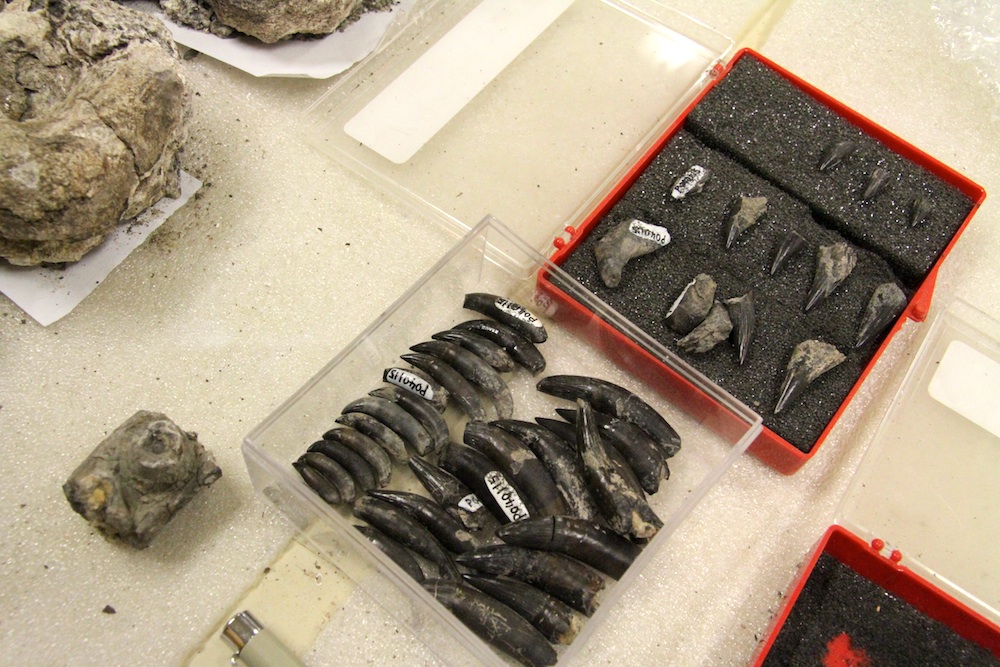
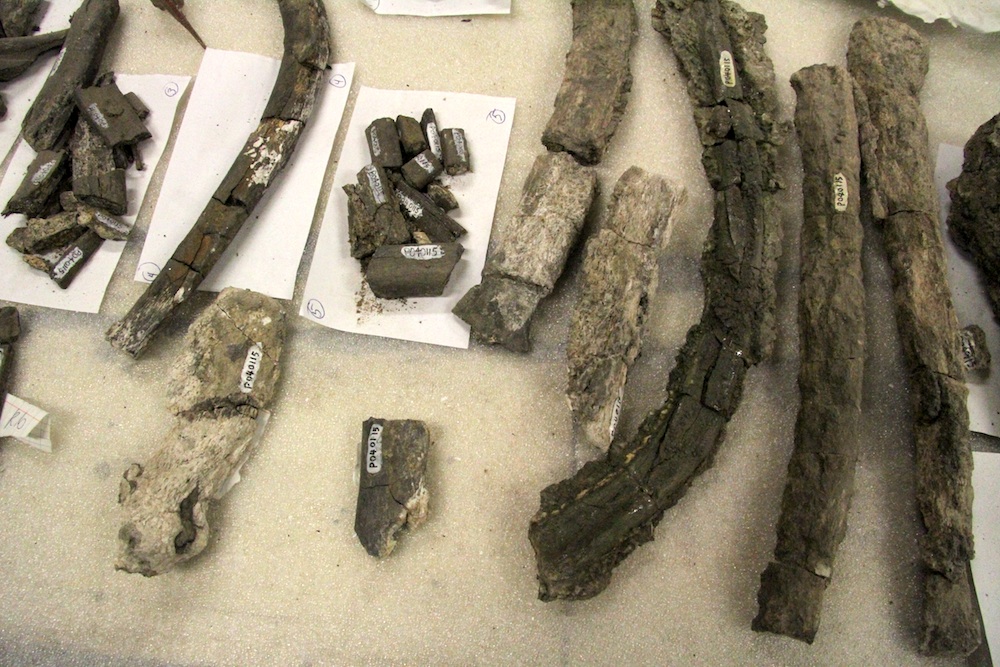

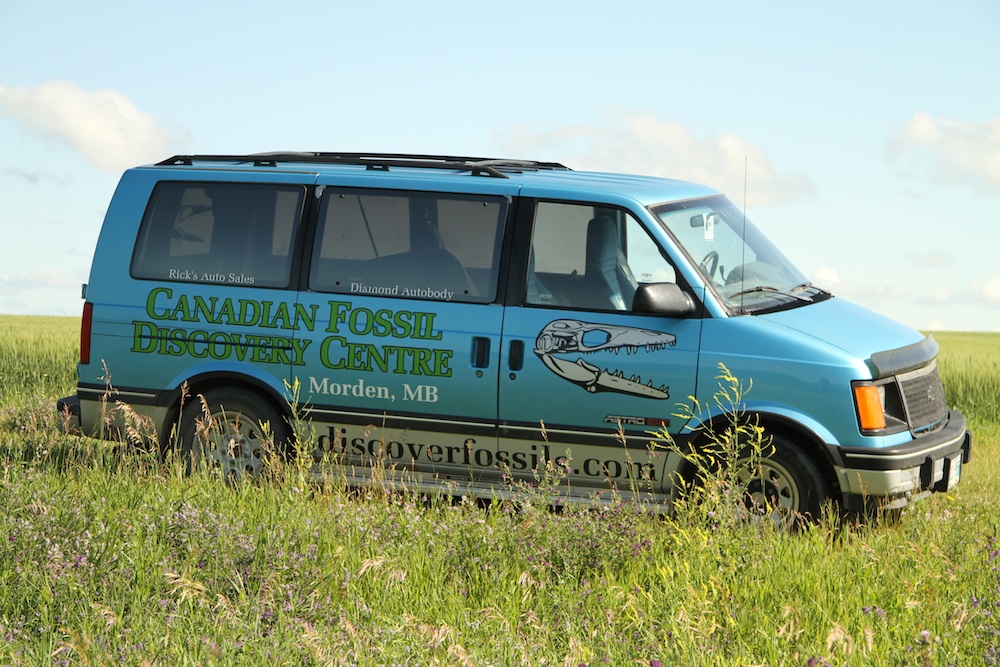
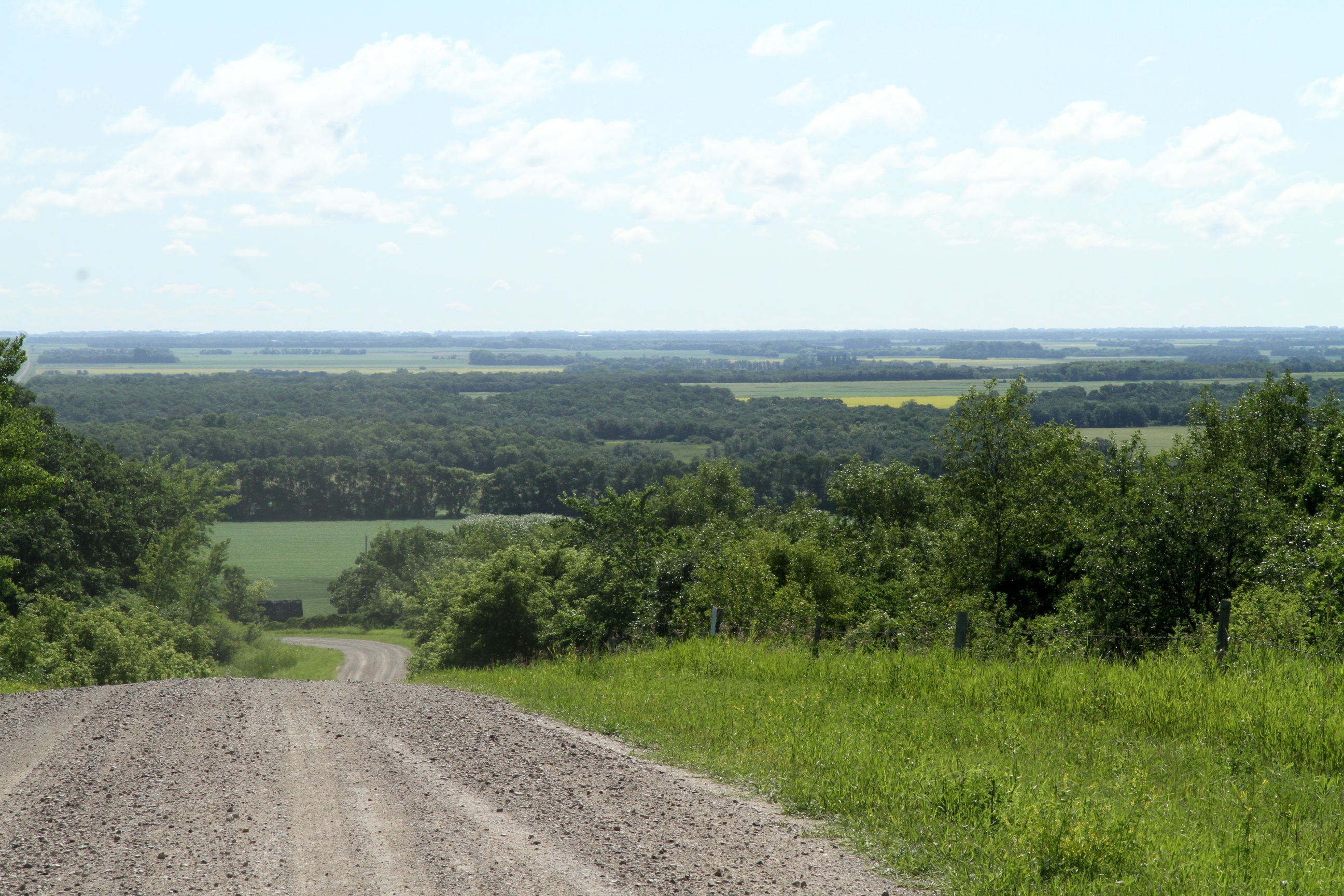
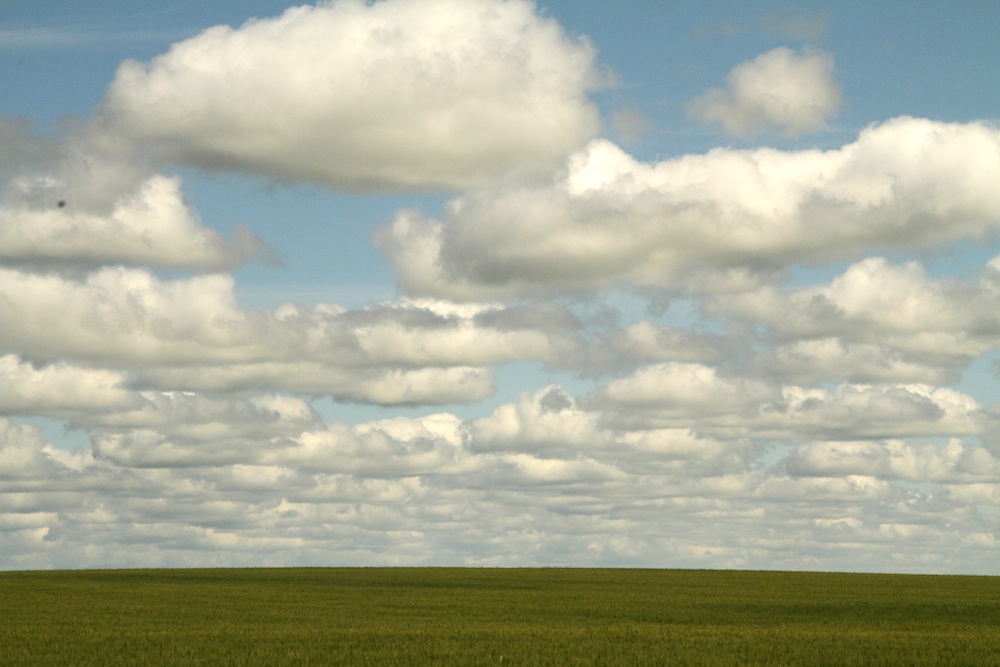

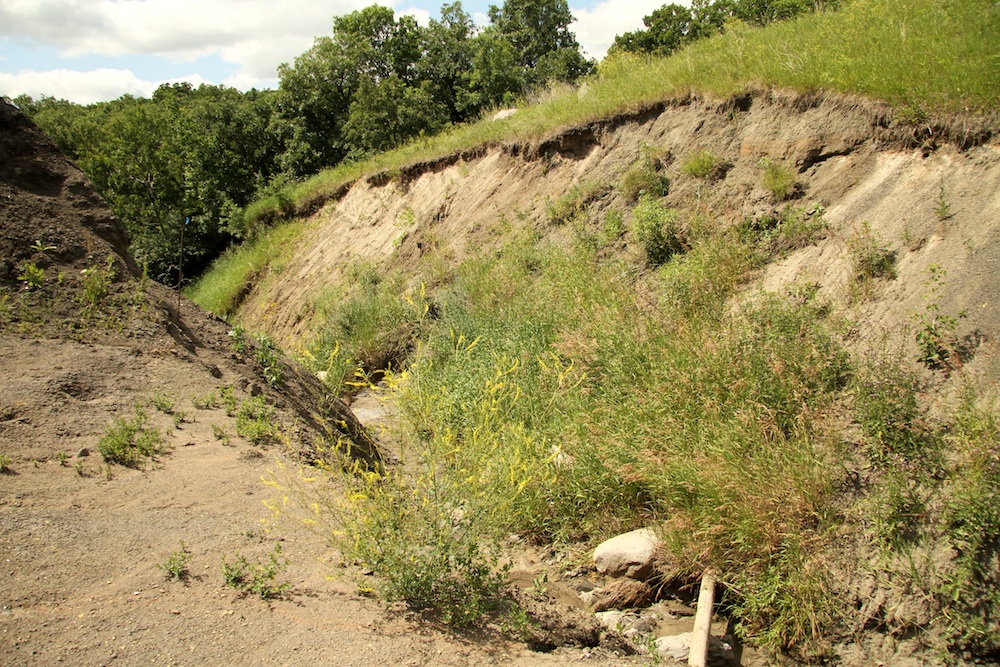
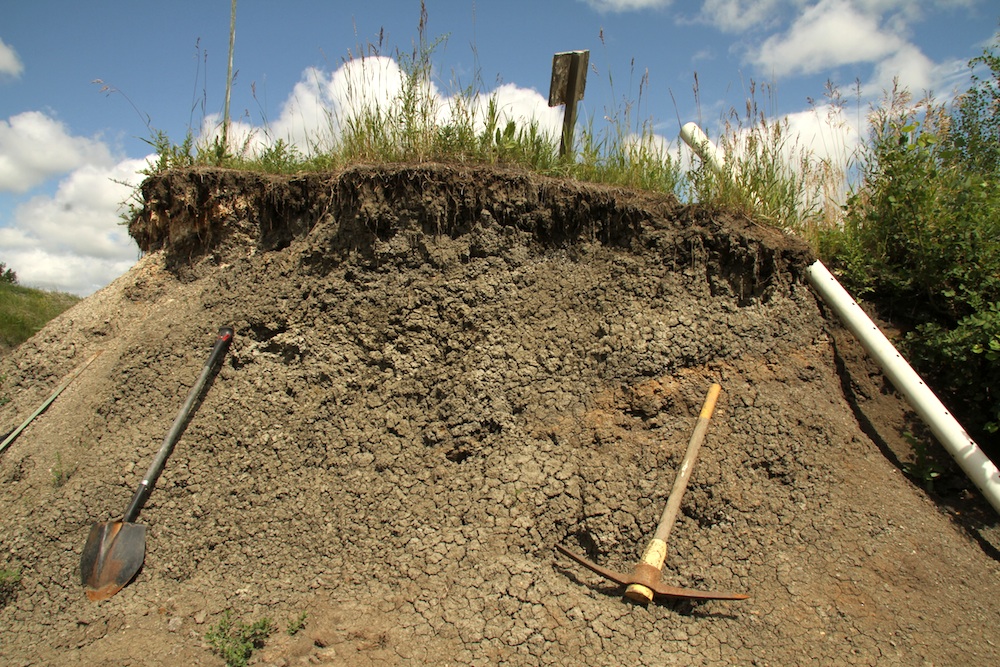
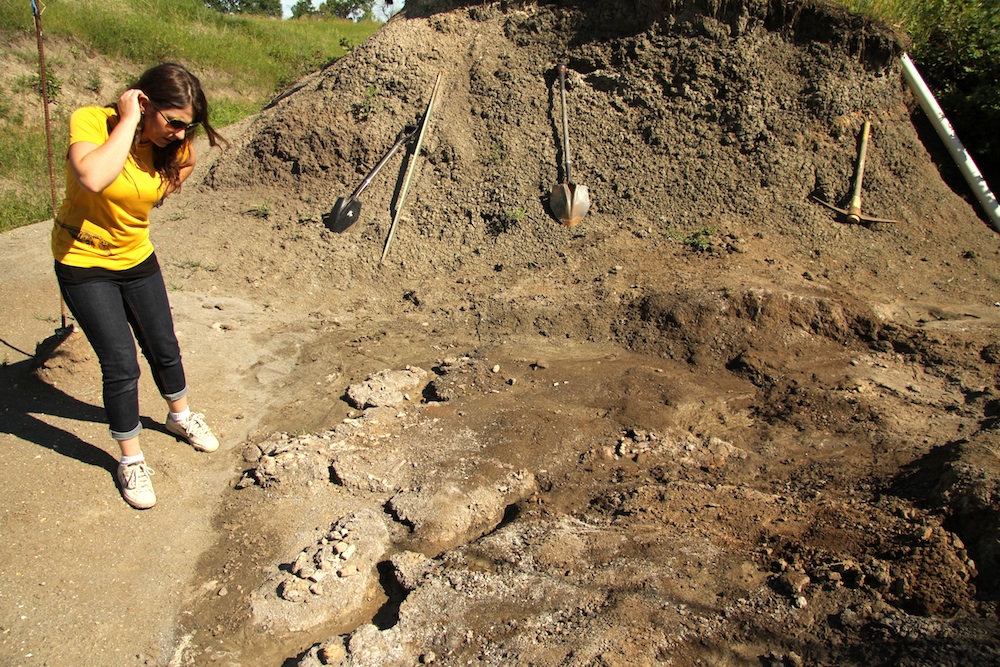
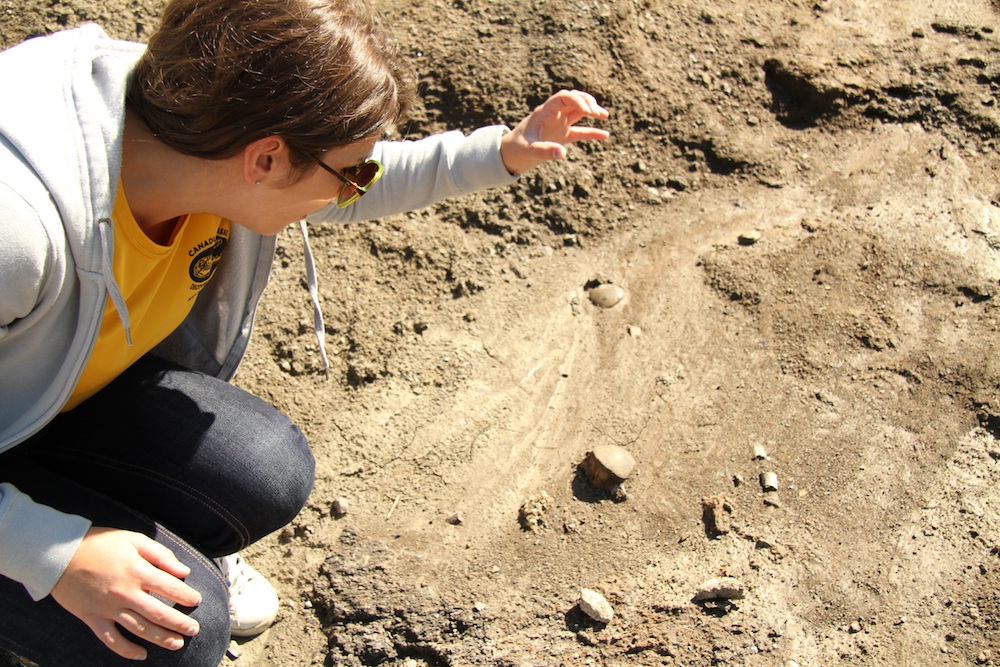
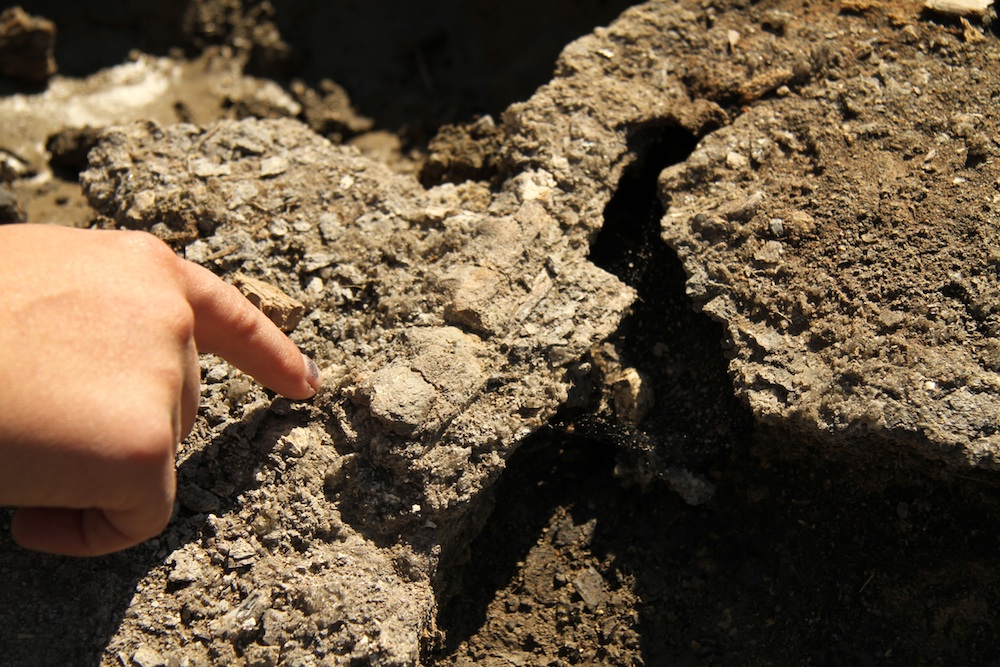
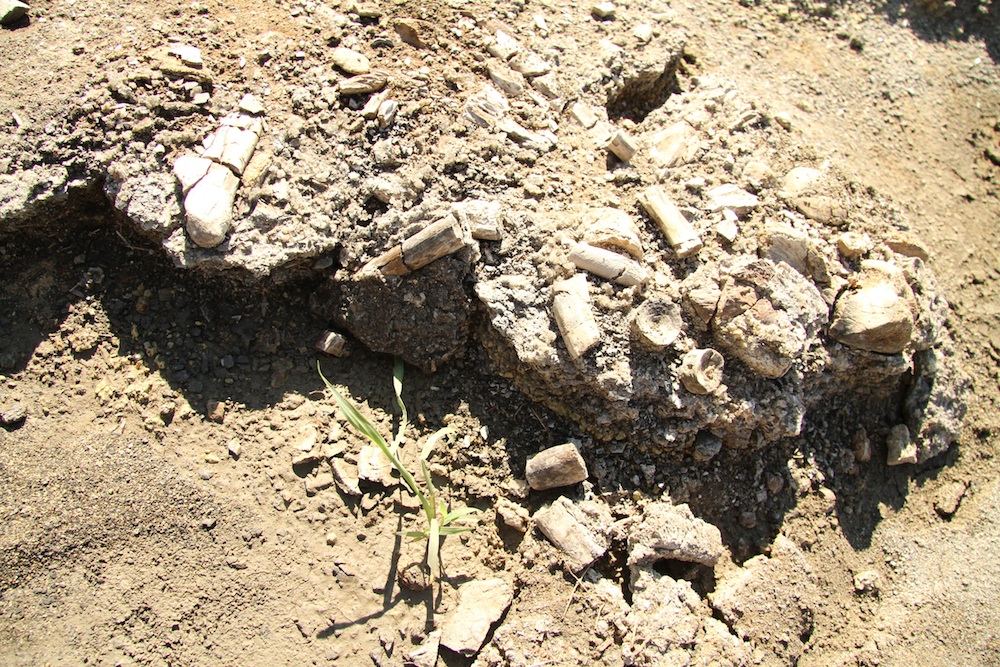
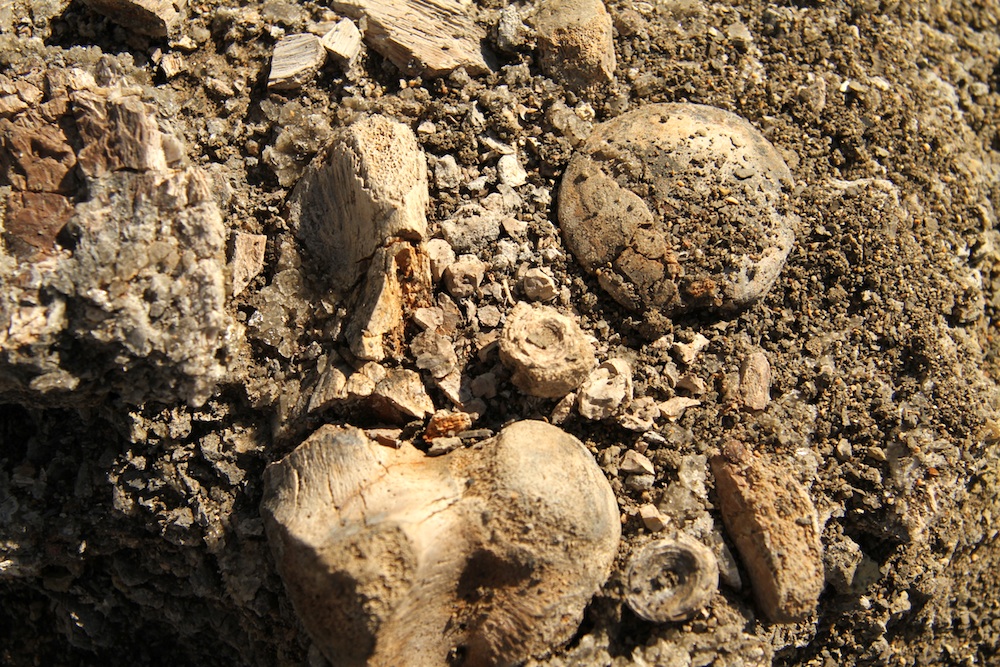
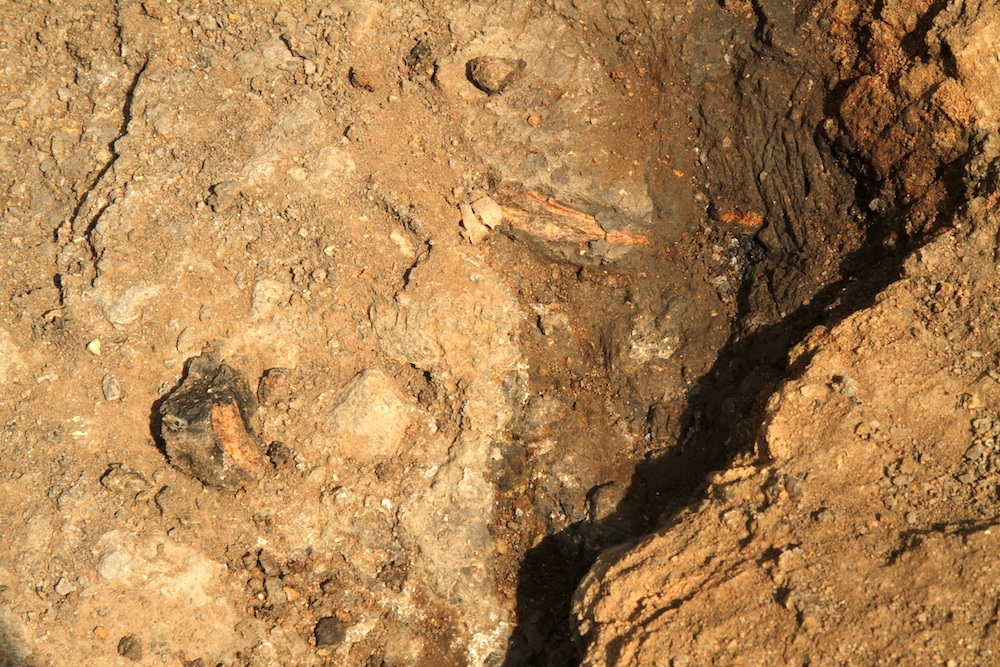

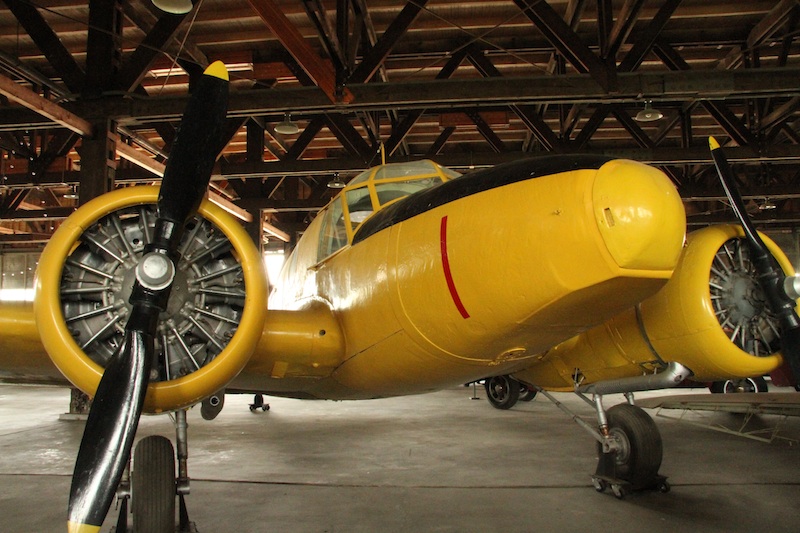


Had a great time digging with you! Hope you are enjoying your time in Manitoba!
It was so much fun, Chelsey! Absolutely loving my time in Manitoba. I head back home this Sunday, and I’m sad to see it coming to an end.
p.s. I corrected the spelling of your name. 🙂
This looks like so much fun! I’ve been in the area, but never had a chance to do the dig. Soon…
It was fun, but also strangely relaxing… you’re all alone in nature with no sounds of traffic or anything, except the buzzing of insects and the sound of the wind. A never ending treasure hunt! And yeah, you definitely have to experience it, Doug.
i love FOSSIL DISCOVERY
I have a fossil unearthed in Petersfield MB….not sure what it is..jaw piece with teeth.
Very cool! I’d contact the Canadian Fossil Discovery Centre and see if they’re able to help you identify it.